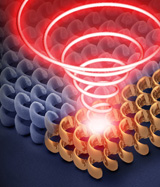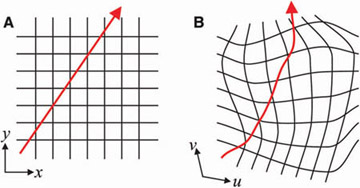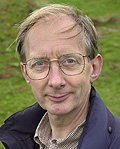Transformation Optics at Optical Frequencies
Category
Published on
Abstract
 Metamaterials, i.e. artificial materials with rationally designed geometry, composition, and arrangement of nanostructured building blocks are opening a gateway to unprecedented electromagnetic properties and
functionalities that are unattainable with naturally occurring materials. Metamaterials also enable transformation optics, which is a new paradigm for the science of light with a family of novel applications ranging from superlens to optical cloaking.
Metamaterials, i.e. artificial materials with rationally designed geometry, composition, and arrangement of nanostructured building blocks are opening a gateway to unprecedented electromagnetic properties and
functionalities that are unattainable with naturally occurring materials. Metamaterials also enable transformation optics, which is a new paradigm for the science of light with a family of novel applications ranging from superlens to optical cloaking.
Metamaterials give enormous choice of material parameters for electromagnetic applications. So much so that we might ask if there is a new way to design electromagnetic systems exploiting this new flexibility. In an ideal world magnetic and electrical field lines can be placed anywhere that the laws of physics allow and a suitable metamaterial found to accommodate the desired configuration of fields. Transformation optics was developed to answer the question of what parameters to choose for the metamaterial.

The idea, as depicted above, is quite straightforward: start with a field pattern that obeys Maxwell’s equations for a system that is topologically similar to the desired configuration but confined either to free space or a simple configuration of permittivity and permeability, then distort the system until the fields are in the desired configuration.
For a more in depth description of transformation optics see John Pendry's description of Transformation Optics located on his group research page.
Bio
 John Pendry is a condensed matter theorist. He has worked at the Blackett Laboratory, Imperial College London, since 1981. He began his career in the Cavendish Laboratory, Cambridge, followed by six years at the Daresbury Laboratory where he headed the theoretical group. He has worked extensively on electronic and structural properties of surfaces developing the theory of low energy diffraction and of electronic surface states. Another interest is transport in disordered systems where he produced a complete theory of the statistics of transport in one dimensional systems.
John Pendry is a condensed matter theorist. He has worked at the Blackett Laboratory, Imperial College London, since 1981. He began his career in the Cavendish Laboratory, Cambridge, followed by six years at the Daresbury Laboratory where he headed the theoretical group. He has worked extensively on electronic and structural properties of surfaces developing the theory of low energy diffraction and of electronic surface states. Another interest is transport in disordered systems where he produced a complete theory of the statistics of transport in one dimensional systems.
In 1992 he turned his attention to photonic materials and developed some of the first computer codes capable of handling these novel materials. This interest led to his present research, the subject of his lecture, which concerns the remarkable electromagnetic properties of materials where the normal response to electromagnetic fields is reversed leading to negative values for the refractive index. This innocent description hides a wealth of fascinating complications. In collaboration with scientists at The Marconi Company he designed a series of ‘metamaterials’ whose properties owed more to their micro-structure than to the constituent materials. These made accessible completely novel materials with properties not found in nature. Successively metamaterials with negative electrical permittivity, then with negative magnetic permeability were designed and constructed. These designs were subsequently the basis for the first material with a negative refractive index, a property predicted 40 years ago by a Russian scientist, but unrealised because of the absence of suitable materials. He went on to explore the surface excitations of the new negative materials and showed that these were part of the surface plasmon excitations familiar in metals. This project culminated in the proposal for a ‘perfect lens’ whose resolution is unlimited by wavelength. These concepts have stimulated further theoretical investigations and many experiments which have confirmed the predicted properties. The simplicity of the new concepts together with their radical consequences have caught the imagination of the world’s media generating much positive publicity for science in general.
Sponsored by
Cite this work
Researchers should cite this work as follows:
Time
Location
Burton Morgan, Room 121, Purdue University, West Lafayette, IN